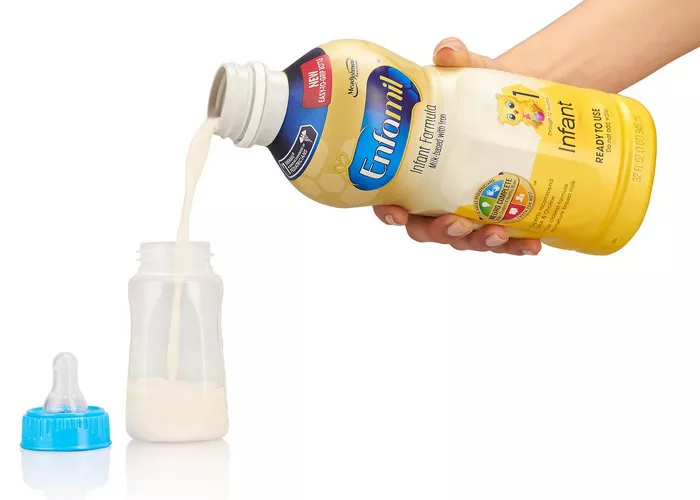Breastfeeding is widely acknowledged as the gold standard for infant nutrition, providing essential nutrients and antibodies crucial for a baby’s growth and development. However, circumstances may arise where supplementing breast milk with formula becomes necessary or preferable. This leads to a common question among parents: Can you mix breast milk with Enfamil, a popular infant formula brand? In this comprehensive guide, we delve into the compatibility of breast milk and Enfamil, addressing concerns and providing insights to help parents make informed decisions about their baby’s nutrition.
Understanding Breast Milk and Infant Formula
Breast milk is a complex and dynamic fluid uniquely tailored to meet the nutritional needs of a growing infant. It contains a perfect balance of carbohydrates, proteins, fats, vitamins, minerals, and antibodies, promoting optimal growth, immune function, and cognitive development. Additionally, breast milk composition adapts over time to meet the changing needs of the baby.
On the other hand, infant formula, such as Enfamil, is a commercially prepared alternative to breast milk. It is formulated to mimic the nutritional profile of breast milk as closely as possible, although it cannot replicate its dynamic nature or provide the same immune-boosting properties. Infant formulas are regulated by government agencies to ensure they meet specific nutritional standards.
Can You Mix Breast Milk with Enfamil?
The short answer is yes, you can mix breast milk with Enfamil. Many parents choose to supplement breastfeeding with formula feeding for various reasons, including insufficient milk supply, returning to work, or personal preference. Combining breast milk with formula can provide flexibility while ensuring that the baby receives adequate nutrition.
However, there are several considerations to keep in mind when mixing breast milk with Enfamil:
1. Temperature Compatibility: Both breast milk and formula should be at the same temperature before mixing to prevent any degradation of nutrients. It’s advisable to warm refrigerated breast milk by placing it in a bowl of warm water and to follow the instructions on the formula package for preparing it at the correct temperature.
2. Hygiene and Safety: It’s essential to practice good hygiene when handling breast milk and formula. Wash your hands thoroughly before expressing breast milk or preparing formula. Use clean bottles, nipples, and other feeding equipment, and follow proper storage guidelines for both breast milk and prepared formula.
3. Proportions and Concentration: When mixing breast milk with Enfamil, consider the proportions carefully to ensure that the baby receives the appropriate amount of nutrients. Follow the instructions provided by your healthcare provider or the formula manufacturer for mixing ratios and feeding volumes based on the baby’s age and nutritional needs.
4. Compatibility Testing: While it’s generally safe to mix breast milk with Enfamil, some parents prefer to conduct a compatibility test by offering the mixture to the baby in small amounts initially. This allows them to observe any potential adverse reactions or changes in the baby’s feeding patterns before fully incorporating the mixture into their feeding routine.
5. Consultation with Healthcare Providers: If you have any concerns or questions about mixing breast milk with formula, it’s advisable to consult with your pediatrician or a lactation consultant. They can provide personalized guidance based on your baby’s specific needs and circumstances.
Benefits of Mixing Breast Milk with Enfamil
Mixing breast milk with Enfamil can offer several benefits for both the baby and the parents:
1. Nutritional Balance: Combining breast milk with formula ensures that the baby receives a balanced diet, incorporating the unique benefits of breast milk along with the essential nutrients provided by formula.
2. Flexibility: Supplementing breastfeeding with formula provides flexibility for parents, allowing them to manage their time more effectively and accommodate various lifestyle factors without compromising their baby’s nutrition.
3. Increased Satisfaction: Some babies may find mixed feeding more satisfying, leading to longer intervals between feedings and better sleep patterns for both the baby and the parents.
4. Shared Feeding Responsibilities: Mixing breast milk with formula enables partners, family members, or caregivers to participate in feeding, fostering bonding and involvement in the baby’s care.
Conclusion
In conclusion, mixing breast milk with Enfamil is a common practice that can provide a balanced and flexible feeding solution for babies. By understanding the compatibility considerations and following best practices for preparation and feeding, parents can ensure that their baby receives the nutrition they need for healthy growth and development. However, it’s essential to consult with healthcare providers for personalized guidance and support, especially if you have any concerns or questions about feeding your baby.
Remember, every baby is unique, and what works best for one may not be suitable for another. Trust your instincts as a parent and prioritize the well-being of your baby as you navigate the journey of feeding and nurturing them.


